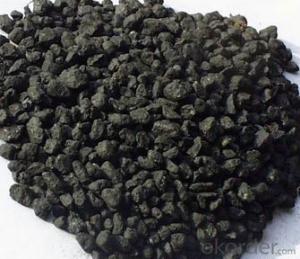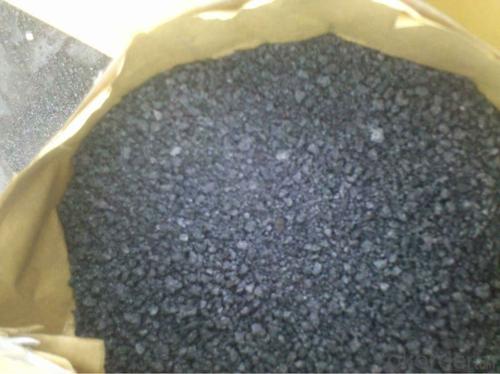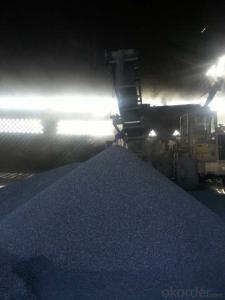Calcined Anthracite CNBM China With FC 95
- Loading Port:
- Tianjin
- Payment Terms:
- TT OR LC
- Min Order Qty:
- 0 m.t.
- Supply Capability:
- 100000 m.t./month
OKorder Service Pledge
OKorder Financial Service
You Might Also Like
Packaging & Delivery
| Packaging Detail: | 25kgs/50kgs/1ton per bag or as buyer's request |
| Delivery Detail: | Within 20 days after receiving corect L/C |
Our Products:
•Feature: All of our goods are made in the best quality of world famous Tianjin. All of our products are with High carbon, Low ash, low sulphur, Low Moisture.
•Application:
The Calcined Anthracite Coal/Gas Calcined Anthracite Coal/Carbon Raiser is mainly used in steelmaking in electrical stove, screening water, shipbuilding sandblast to remove rust. It can reduce the cost of steelmaking effectively by replacing the traditional petroleum coke of carburant.Also can improve the Carbon content in steel-melting and Ductile iron foundry.
General Specification of Calcined Anthracite:
Specifications
Calcined Anthracite
Fixed carbon: 90%-95%
S: 0.5% max
Size: 0-3. 3-5.3-15 or as request
PARAMETER UNIT GUARANTEE VALUE | |||||
F.C.% | 95MIN | 94MIN | 93MIN | 92MIN | 90MIN |
ASH % | 4MAX | 5MAX | 6MAX | 7MAX | 8MAX |
V.M.% | 1 MAX | 1MAX | 1.5MAX | 1.5MAX | 1.5MAX |
SULFUR % | 0.5MAX | 0.5MAX | 0.5MAX | 0.5MAX | 0.5MAX |
MOISTURE % | 0.5MAX | 0.5MAX | 0.5MAX | 0.5MAX | 0.5MAX |
Size can be adjusted based on buyer's request.
Pictures of Calcined Anthracite:
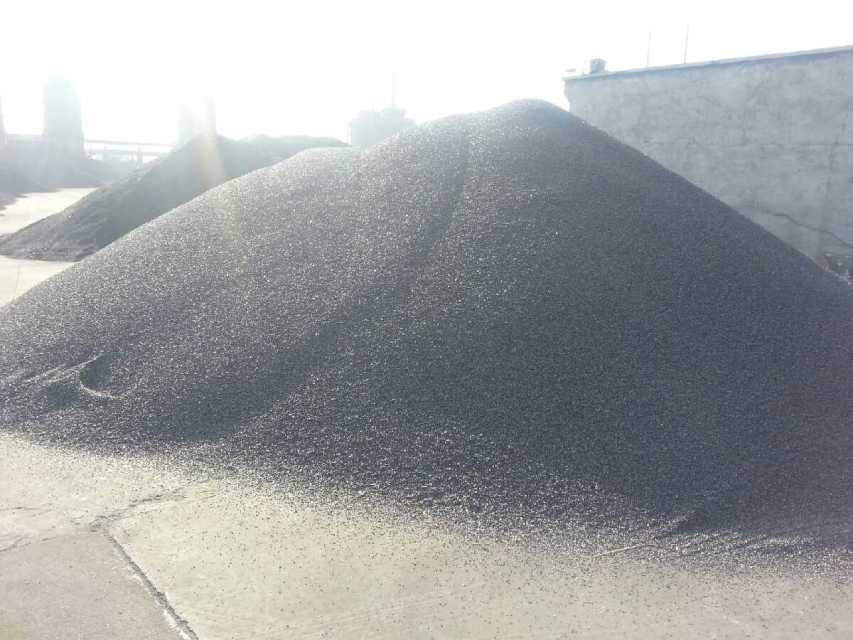
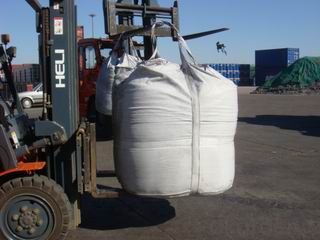
- Q: What is the carbon content of different fuels?
- The carbon content of different fuels can vary significantly depending on their composition and source. However, in general, fossil fuels such as coal, oil, and natural gas have high carbon content. Coal, which is primarily composed of carbon, typically contains around 60-80% carbon. This makes coal a highly carbon-intensive fuel and a major contributor to greenhouse gas emissions when burned. Crude oil and petroleum products, such as gasoline and diesel, also have high carbon content, ranging from 80-90%. When these fuels are burned, they release significant amounts of carbon dioxide (CO2) into the atmosphere. Natural gas, consisting mainly of methane (CH4), has a lower carbon content compared to coal and oil. Methane itself is composed of one carbon atom and four hydrogen atoms, resulting in a carbon content of around 75%. Although natural gas emits less CO2 when burned compared to coal and oil, methane itself is a potent greenhouse gas, which can contribute to climate change. Renewable fuels, such as biofuels, have varying carbon contents depending on their source. Biofuels are derived from organic materials, such as plants and agricultural waste, and can have carbon contents similar to fossil fuels. However, since biofuels are derived from recently living organisms, the carbon dioxide emitted during their combustion is considered part of the natural carbon cycle and does not contribute to long-term increases in atmospheric CO2 levels. Overall, the carbon content of different fuels is an important factor in determining their environmental impact and contribution to climate change. Transitioning to low-carbon or carbon-neutral fuels is crucial in reducing greenhouse gas emissions and mitigating the effects of climate change.
- Q: What is the role of carbon 60 in industry? Can it be interchanged with the chemical properties of carbon? What is the chemical structure of carbon 60?
- Used to strengthen metals; used as a new catalyst for storage of gases
- Q: How do you distinguish between alkaline and ordinary carbon cells?
- The alkaline cell of the carbon cell can touch the ring groove at the end of the negative electrode, and there is no groove in the cylindrical surface of the ordinary dry cell, because the two sealing methods are different.
- Q: What kind of industry does high-performance carbon fiber belong to?
- High performance carbon fiber is used in many industries, such as automobiles, bicycles, and even the aviation industry.. If you look at the industry type, many industries have high-performance carbon fiber figure, if divided by the industry attributes, should belong to the emerging industry, the future potential of the industry
- Q: Why are biological molecules carbon based molecular aggregates?
- C is the core elements of life. C is the most basic element of a cell. C accounts for 56% of the cell dry weight and is the most important element.
- Q: What's the difference between an alkaline cell and a carbon cell?
- Carbon batteries and alkaline batteries are dry cells, but only in accordance with the quality of different materials and divided into two categories:2. The battery should be full carbon carbon zinc batteries (because it is the general level is the carbon rod electrode is the zinc skin), also known as zinc manganese battery, is currently the most common dry battery, it has the characteristics of low price and safe and reliable use, based on the consideration of environmental factors, because the ingredients still contain cadmium. It must be recovered, so as to avoid damage to the environment of the earth. (so we usually use the carbon rod, the negative electrode is zinc skin, the battery should be recycled)
- Q: How does carbon impact the formation of smog?
- Carbon plays a significant role in the formation of smog as it is one of the main contributors to the formation of ground-level ozone. When carbon-based pollutants, such as vehicle exhaust and industrial emissions, react with sunlight and other pollutants in the atmosphere, they undergo a complex chemical reaction leading to the production of smog. This smog not only poses health risks to humans but also harms the environment by contributing to climate change and damaging ecosystems.
- Q: What are the advantages of carbon-based fuel cells?
- Carbon-based fuel cells offer several advantages that make them a promising technology for the future. Firstly, they have a higher energy density compared to conventional batteries, meaning they can store and deliver more energy per unit weight. This allows for longer operating times and greater power output, which is particularly beneficial in applications requiring high power density and long-range capabilities, like electric vehicles. Secondly, carbon-based fuel cells boast a faster refueling time than conventional batteries. While it can take hours to recharge a battery, refueling a carbon-based fuel cell can be done in a matter of minutes. This significant advantage reduces refueling downtime and enables more convenient and efficient usage of the technology. Furthermore, carbon-based fuel cells have a lower environmental impact compared to traditional combustion engines. They produce only water and heat as byproducts, making them clean and environmentally friendly. This is in contrast to internal combustion engines that emit harmful pollutants contributing to air pollution and climate change. Another advantage of carbon-based fuel cells is their versatility and compatibility with existing infrastructure. They can easily be integrated into current energy systems, facilitating a smooth transition from fossil fuels to cleaner energy sources. This compatibility makes carbon-based fuel cells a viable option for various applications, from portable electronics to residential power generation. Lastly, carbon-based fuel cells have the potential to contribute to energy independence. As carbon-based fuels can be derived from renewable sources like biomass or waste, they offer a sustainable and domestically sourced energy solution. This reduces dependence on foreign oil and enhances energy security for countries. In conclusion, the benefits of carbon-based fuel cells include higher energy density, faster refueling time, lower environmental impact, compatibility with existing infrastructure, and the potential for energy independence. With these advantages, carbon-based fuel cells have the potential to revolutionize the energy landscape and provide a sustainable and efficient alternative to conventional energy sources.
- Q: Is there a line cutting of carbon fibers?
- Having the cutting of carbon fibers by wire cutting.Carbon fiber products: carbon fiber reinforced one-way plate, the molding process is to impregnated the carbon fiber resin in the mold curing and continuous pultrusion. Using high quality carbon fiber material and good basic resin, carbon fiber board has good tensile strength, corrosion resistance, seismic resistance, impact resistance and other good performance.The carbon fiber unidirectional plate can give full play to the strength and the elastic modulus of the carbon fiber, and can avoid the resin curing stage of the carbon fiber unidirectional fabric during construction, and has high strength utilization efficiency and convenient construction.
- Q: How is carbon used in the production of activated carbon filters?
- Carbon is used in the production of activated carbon filters because of its highly porous structure. This porous structure provides a large surface area for adsorption, allowing the carbon to effectively trap and remove contaminants such as chemicals, odors, and impurities from air or water.
Send your message to us
Calcined Anthracite CNBM China With FC 95
- Loading Port:
- Tianjin
- Payment Terms:
- TT OR LC
- Min Order Qty:
- 0 m.t.
- Supply Capability:
- 100000 m.t./month
OKorder Service Pledge
OKorder Financial Service
Similar products
Hot products
Hot Searches


